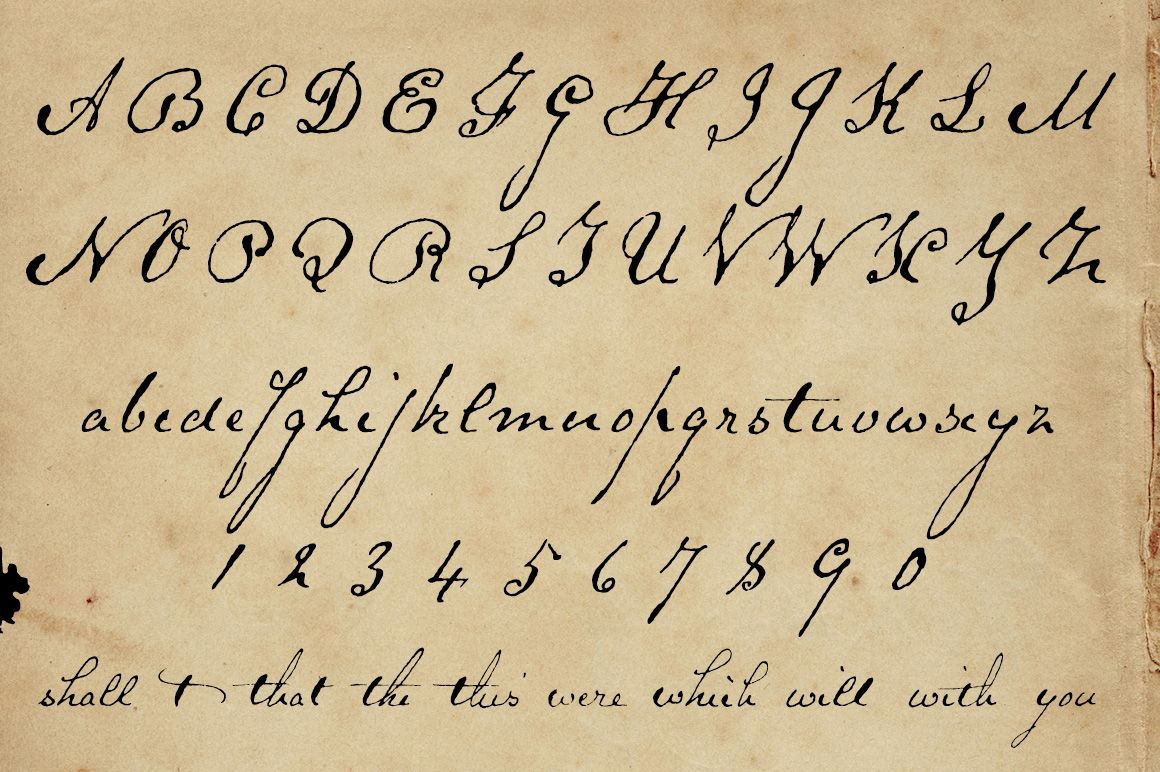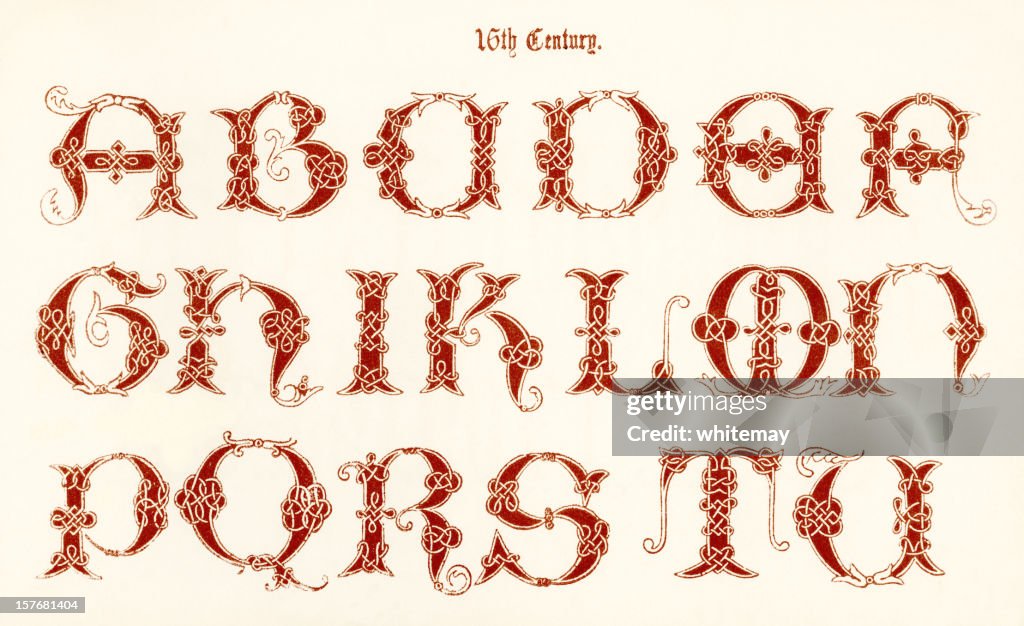
Cursive Alphabet 1800s
the eighties the 1980s NOTE: There's no apostrophe between the numerals and the letter s. The same rule about capitalization applies to decades as to centuries: if the decade is part of a proper name or title, it will be capitalized; otherwise leave it in lowercase. For example, write "the nineties," but "the Gay Nineties"

Ornamental Alphabet 16th Century in 2020 Typography alphabet, Lettering alphabet, Old english
In English, a capital letter is used for the first word of a sentence and for all proper nouns (words that name a specific person, place, organization, or thing). In some cases, capitalization is also required for the first word in a quotation and the first word after a colon. Instantly correct all language mistakes in your text

Font Alphabet Styles Century Gothic
Chris McCormick. On the flight to California, I sat next to a man who introduced himself as the only rabbi in Sioux City, Iowa. When he learned I was off to Glendale to write about the Armenians.

16th Century Italian Capital Letters HighRes Vector Graphic Getty Images
Updated on October 12, 2022 Time periods and events are capitalized when they refer to specific periods or use proper nouns in the title, e.g., the Roaring Twenties or the American Civil War.

14th Century English Capital Letters HighRes Vector Graphic Getty Images
Capitalization or capitalisation in English grammar is the use of a capital letter at the start of a word. English usage varies from capitalization in other languages . History of English capitalization Capitalization in Chaucer's Canterbury Tales (Ellesmere Manuscript, about 1400)

Alphabet Grid. Upper and Lower. Century Gothic.pdf
the 1800s the nineteenth century or the 19th century the sixth century Don't set the letters denoting ordinals in superscript. the 21st century, not the 21 st century An apostrophe before the s in names of centuries is unnecessary, but not incorrect. the 1600s or the 1600's Avoid capitalizing names of centuries.

Unknown Capital Letter A the Antiquities of Herculaneum ExposedEtching 18th Century For
Los Angeles County. In 1958, due to increased consumer demand for individual telephone numbers, the telephone company began phasing out old exchange names for all numeric telephone numbers or "All Number Calling" (pretty much gone by 1963). These old exchange names are remembered in Glenn Miller's song PEnnsylvania 6-5000 and Elizabeth Taylor.

Unknown Capital letter P from the Antiquities of Herculaneum Etching 18th Century For Sale
Learning the capitalization rules when it comes to English can be confusing at first. Ease your puzzlement with these rules laid out simply for you!

Unknown Two examples of the capital letter I Typeface Engraving 17th Century For Sale at
#1 Good day! A quick, small question. Do we ever treat a specific century like a proper noun, i.e. capitalized "C" or is it unnecessary or perhaps are both possible? I suppose the same question could apply to the word "age" such as in "the digital age." "The Digital Age" or written in small letters? Do we say the "Stone Ages?"

Unknown Capital Letter from Ancient Rome Original Etching by Various Masters 1750s For
English capitalization rules: When to capitalize. Knowing which types of words to capitalize is the most important part of learning English capitalization rules. Basically, there are three types of words you capitalize in English: the pronoun I; the first word in a sentence or line of a letter (e.g., Sincerely) proper nouns

12th Century English Capital Letters HighRes Vector Graphic Getty Images
The questioned value of capital letters. Editor's Picks. By Maya P. Lim July 24, 2018 ∙ 7 min. read. Fun fact: People remember 80% of what they see versus only 20% of what they read. it is so conventional to see a sentence begin with a capital letter that it is only noticed when one isn't. Capitalization is so much a part of current English.

Late 20th Century Capital "U" Channel Letter Channel letters, Lettering, Capitals
Beginning in 1618, the Thirty Years' War left a scar on the seventeenth century. - Correct. Beginning in 1618, the Thirty Years' War left a scar on the sixteenth century. - Incorrect. To avoid this mistake, keep in mind that the number refers to the end of the century (e.g. 1800 or 1900) and covers the preceding hundred years.

Examples Of Medieval Decorative Art Capital Letters Floral Design Elements Stock Illustration
Writing Capitalization Rules for Names of Historical Periods and Movements by Mark Nichol When are designations for historically significant phenomena treated with initial capital letters, and when are the names rendered with lowercase letters? Exceptions, as always, are available to confound us, but the rules are fairly straightforward.

illuminatedcapitalletterantique16thcenturyillustrationillustrationid482599582 (894×1024
However, do not capitalize the names of centuries or decades unless they are part of special names: the twentieth century the fifties but. the Roaring Twenties (name of an era) Note that terms referring to events and periods are often capitalized when they refer to specific events or periods and lower cased when used in a general sense:

Stilrichtung Des 17 Jahrhunderts Stil Alphabet Schriftzug StockIllustration Getty Images
A: When William Caxton introduced printing to England in the 15th century, "great uncertainty" surrounded the use of capital letters, according to the linguist David Crystal. In The Stories of English (2004), Crystal writes that capital letters were "first used for proper names as well as for sentence and verse-line openings."

19th century Typography alphabet, Typography, Lettering alphabet
I know that if you are talking about a particular century, like 'the 20th Century', it's a capital letter. If you are referring to 'the present century', is it supposed to be like that or is it supposed to be 'the present Century' or even 'the Present Century'? nouns writing-style capitalization proper-nouns Share Improve this question Follow